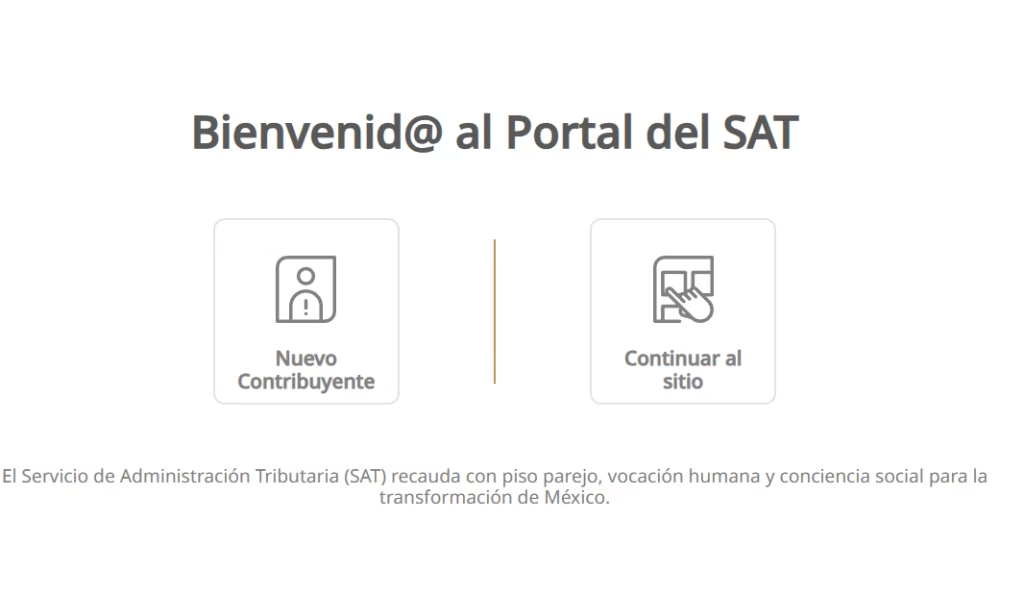This article provides a comprehensive overview of the RFC, including its definition, purpose, registration process, and the risks of non-compliance. We’ll also share real-world cases and practical tips for 2025.
As cross-border e-commerce continues to expand into Latin America, Mexico has become one of the most attractive markets for international sellers. With a population of over 130 million and a rapidly growing online retail sector—expected to surpass $50 billion USD in e-commerce sales by 2026—Mexico is a market no global seller can ignore.
However, entering Mexico requires more than just logistics and marketing. Sellers must comply with local tax regulations, and at the heart of this compliance is the RFC Tax ID (Registro Federal de Contribuyentes).
What is the RFC Tax ID?
The RFC (Registro Federal de Contribuyentes) is Mexico’s official taxpayer identification number, issued by the Servicio de Administración Tributaria (SAT), the country’s federal tax authority.
- For individuals: RFC consists of 13 characters (letters + numbers).
- For companies: RFC consists of 12 characters.
It functions similarly to a VAT number in the EU or a TIN (Tax Identification Number) in the United States.
Why is the RFC Important?
The RFC is central to Mexico’s tax system and is required for:
- Tax compliance: Filing and paying VAT (IVA) and income tax (ISR).
- Business operations: Conducting legal commercial activities, including e-commerce, imports, and exports.
- Avoiding excessive withholding:
- Without an RFC, cross-border sellers may face 36% automatic withholding (16% VAT + 20% income tax).
- With an RFC, sellers can self-declare taxes and significantly reduce their tax burden.
In short: No RFC = higher taxes and limited business opportunities.
Who Needs to Register for an RFC?
Non-resident sellers:
- If you store inventory in Mexico (e.g., Amazon FBA Mexico, local 3PL warehouses).
Mexican companies and residents:
- All locally registered businesses and individuals engaged in economic activity.
Exemptions:
- Sellers shipping directly from China or using U.S.-based fulfillment programs (without Mexican inventory) are generally not required to register.
RFC Format
Individual RFC (13 characters): Format: AAAA YYMMDD XXX
- First 4 letters: initials of the name
- Next 6 digits: date of birth (YYMMDD)
- Last 3 characters: alphanumeric code
Corporate RFC (12 characters): Format: AAAA 12345 XXX
- First 3–4 letters: company name abbreviation
- Next digits: registration details
- Last 3 characters: alphanumeric code
mexico rfc check: chick here
How to Register for an RFC
Step 1: Prepare Documentation
- Individuals: Passport, proof of address (translated into Spanish and apostilled).
- Companies: Business license, articles of incorporation, power of attorney (notarized and apostilled).
Step 2: Online Pre-Registration
- Submit an application via the SAT (Mexican Tax Authority) website. check here: www.sat.gob.mx
Step 3: Appointment & Interview
- A local tax representative attends an in-person appointment at SAT with the documents.
- In most cases, results are issued the same day.
Step 4: Obtain RFC Certificate
- Once approved, the RFC certificate is issued, typically valid for 3 years.
Key Considerations
Consistency: The RFC must match the company name in your Amazon or e-commerce platform account.
Tax deductions: With an RFC, sellers can deduct VAT on expenses such as advertising, logistics, and warehousing.
Risk warning: Using a freight forwarder’s shared RFC is risky—it may cause account linkage issues or even suspension.
Case Studies
Case 1: Amazon FBA Seller in Mexico
- Background: A Shenzhen-based electronics seller stored inventory in Amazon Mexico’s FBA warehouse.
- Problem: Without an RFC, Amazon withheld 36% of sales revenue.
- Solution: After registering for an RFC, the seller reduced tax withholding to ~16% VAT and was able to reclaim deductible expenses.
- Result: Profit margins improved by 20% within three months.
Case 2: Shared RFC Risk
- Background: A small apparel seller used a freight forwarder’s RFC to avoid paperwork.
- Problem: Multiple sellers shared the same RFC, leading to account linkage and eventual suspension.
- Lesson: Always register your own RFC to avoid compliance risks.
The RFC is not just a tax ID—it’s a gateway to the Mexican market. For cross-border sellers, especially those using local warehouses or FBA Mexico, registering for an RFC is essential to:
- Reduce tax burdens
- Ensure compliance
- Build long-term business stability
Failure to register can result in excessive tax withholding, account risks, and lost competitiveness.
Q&A: Common Questions About RFC
A Guide to China’s Top 5 Airports 2025
Soaring Through the Middle Kingdom: A Guide to China’s Top 5 Airports 2025, China’s meteoric…
The Ultimate Guide to Sourcing & Shipping Christmas Ornaments from China
The Ultimate Guide to Sourcing & Shipping Christmas Ornaments from China. The holiday season is…
Decoding Shunde: The Ultimate Guide to the World’s Appliance Capital
Decoding Shunde, If you’ve ever turned on a microwave, blended a smoothie, or adjusted your…




